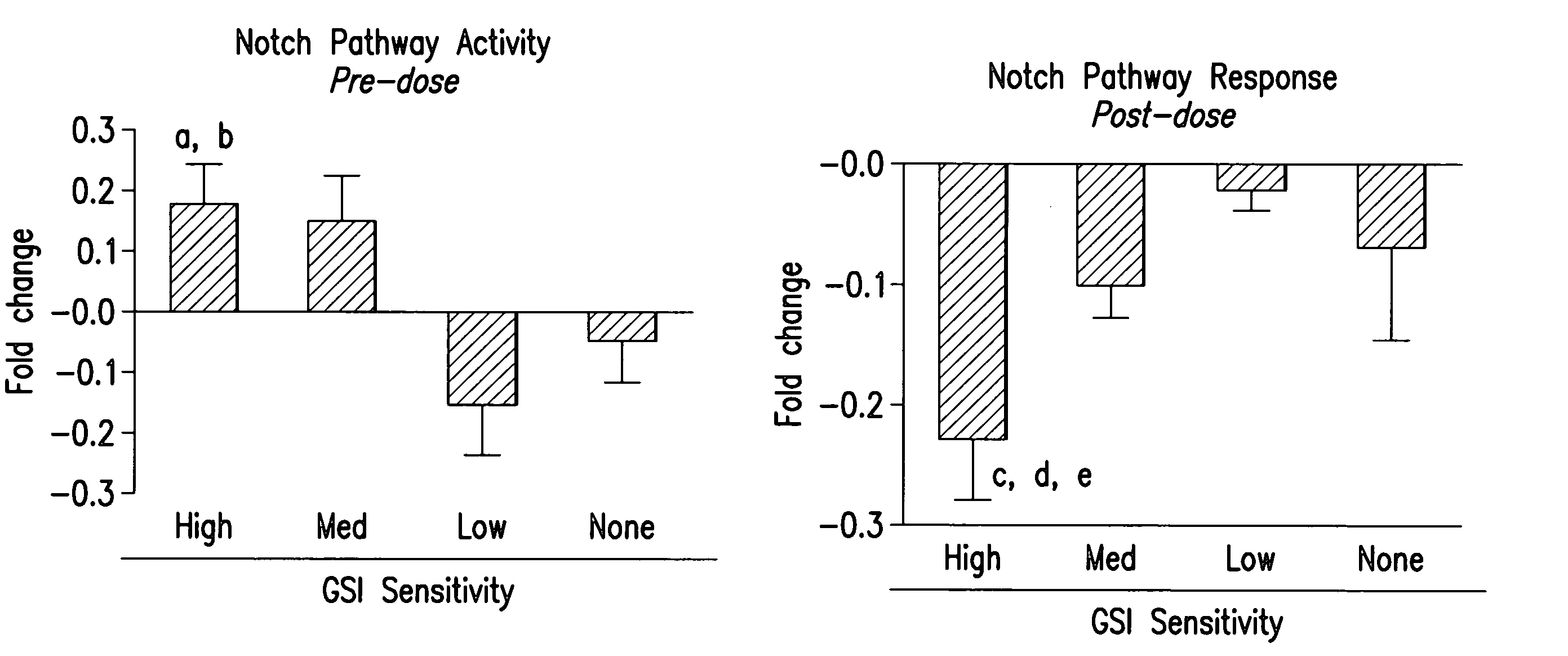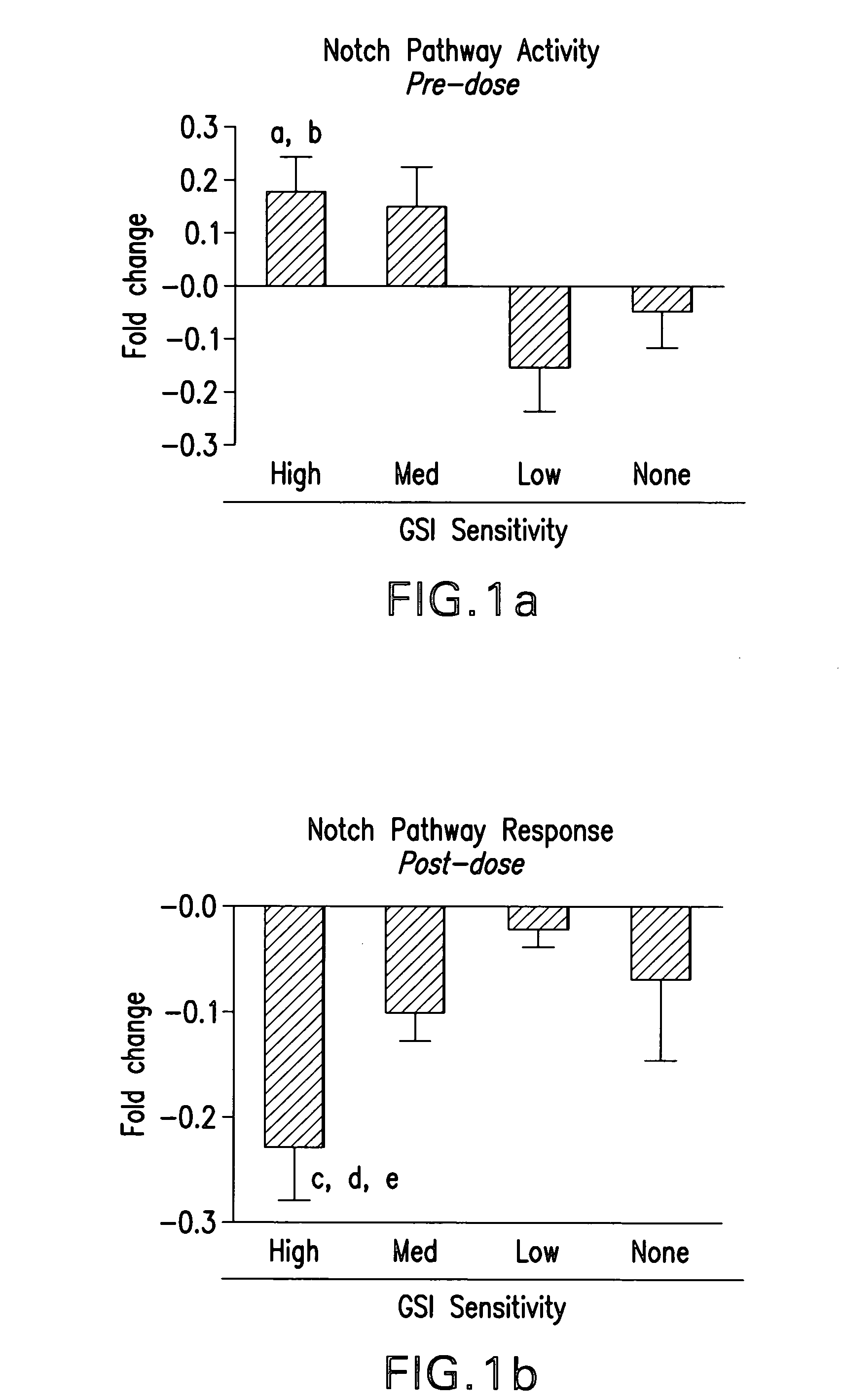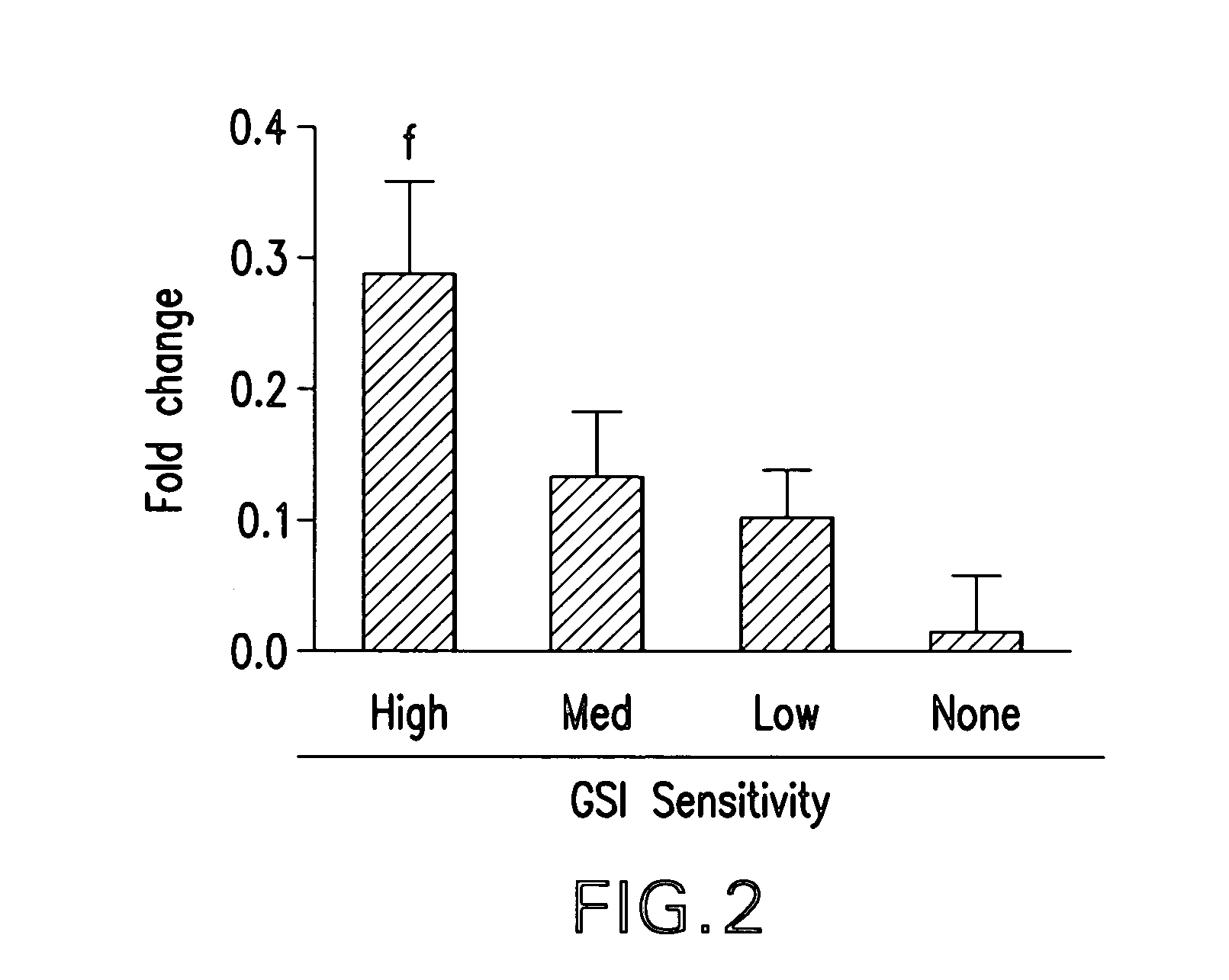Methods for predicting treatment response based on the expression profiles of biomarker genes in notch mediated cancers
a biomarker gene and notch-mediated cancer technology, applied in the field of methods for predicting treatment response based on the expression profiles of biomarker genes in notch-mediated cancers, can solve the problems of disease contributing to a major financial burden for the community and individuals, no guarantee of success, and embryonic lethal phenotype in mice, so as to improve the ability to accurately correlate a molecular expression phenotype and determine the prognosis. , the effect of significan
- Summary
- Abstract
- Description
- Claims
- Application Information
AI Technical Summary
Benefits of technology
Problems solved by technology
Method used
Image
Examples
example 1
Materials and Methods
[0208]Compounds: MRK-003 (active GSI) and MRK-006 (275-fold less active enantiomer control) were previously described (Lewis, Leveridge et al. 2007).
[0209]Cell culture and cell viability: Human T-ALL cell lines were purchased from ATCC (Manassas, Va.) or DSMZ (Braunschweig, Germany). Cell lines were maintained in RPMI supplemented with 10-15% FBS and 2 mmol / L glutamine. For IC50 analyses TALL cell lines were plated in 96 well plates at 5000 cells / well, except for Tall-1 cells which were plated at 10,000 cells / well. Cells were re-fed with compound and media on day 4. Viability assays were performed using Cell Titer Glo kit (Promega, Cat. No. G7572, Fitchburg, Wis.) 7 days after compound addition. For larger scale compound treatments, TALL cell lines were plated in T-150 flasks at 200,000 cells / mL and treated at 0.1 or 1.0 μM GSI (MRK-003) for 3 days or as indicated. GSI washout studies were performed using 10 μM GSI. T-150 cultures were also re-fed on day 4.
[0210...
example 2
[0221]To identify additional predictive and response genes we utilized mRNA expression data from thirteen T-ALL cell lines where the Notch-10 gene set score showed good correlation with GSI-sensitivity in both DMSO control and MRK-003 treated cells (FIG. 4). Sixty three genes were identified which positively correlated with GSI-sensitivity predose (higher in GSI-sensitive cells predose) (correlation coefficient 0.04, p0.4, p0.04, p<0.05) (Table 8 and FIG. 6). Together or individually these 194 genes represent the most robust set of genes which predict GSI-sensitivity and are also capable of demonstrating GSI response.
PUM
| Property | Measurement | Unit |
|---|---|---|
| Therapeutic | aaaaa | aaaaa |
| Sensitivity | aaaaa | aaaaa |
| Gene expression profile | aaaaa | aaaaa |
Abstract
Description
Claims
Application Information
 Login to View More
Login to View More - R&D
- Intellectual Property
- Life Sciences
- Materials
- Tech Scout
- Unparalleled Data Quality
- Higher Quality Content
- 60% Fewer Hallucinations
Browse by: Latest US Patents, China's latest patents, Technical Efficacy Thesaurus, Application Domain, Technology Topic, Popular Technical Reports.
© 2025 PatSnap. All rights reserved.Legal|Privacy policy|Modern Slavery Act Transparency Statement|Sitemap|About US| Contact US: help@patsnap.com



